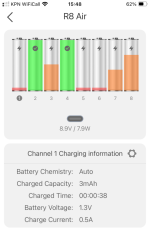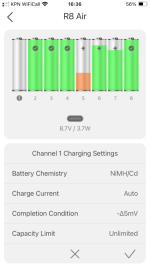After earlier USB-C discussions, I'm wondering about chargers for rechargeable NiMH AA and AAA batteries. These batteries are still amazing work horses after many decades, having upgraded their mAh ratings and conquered their self-discharge issues more recently.
I currently have an Ikea charger that's pretty good, but that 230 V stuff (yes, that was a compromise between the mainland Europe 220 V and British/Irish 240 V but we didn't go back to 220 after brexit) is starting to annoy me fast.
So... any good AA/AAA chargers that take USB-C power?
Especially interesting would be ones that use PPS to deliver the exact right voltage.
The Wirecutter has a pretty nice recommendation but that one doesn't seem to be for sale in Europe.
I currently have an Ikea charger that's pretty good, but that 230 V stuff (yes, that was a compromise between the mainland Europe 220 V and British/Irish 240 V but we didn't go back to 220 after brexit) is starting to annoy me fast.
So... any good AA/AAA chargers that take USB-C power?
Especially interesting would be ones that use PPS to deliver the exact right voltage.
The Wirecutter has a pretty nice recommendation but that one doesn't seem to be for sale in Europe.


